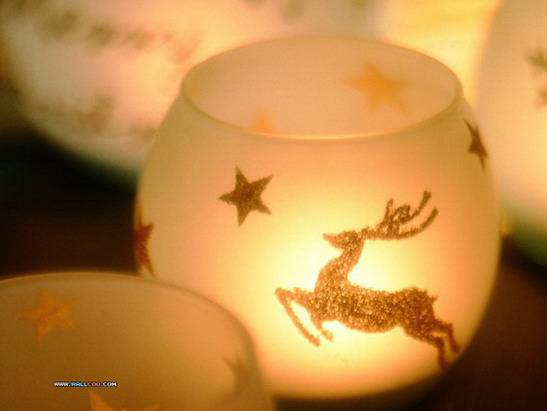 “สืบฮีต สานฮอย ต๋ามโคมผ่อกอย ยี่เป็งล้านนา”
“สืบฮีต สานฮอย ต๋ามโคมผ่อกอย ยี่เป็งล้านนา”
การท่องเที่ยวแห่งประเทศไทย (ททท.) สำนักงานเชียงใหม่ ร่วมกับ เทศบาลนครเชียงใหม่ กำหนดจัดงาน “ประเพณีเดือนยี่เป็งเชียงใหม่” “สืบฮีต สานฮอย ต๋ามโคมผ่อกอย ยี่เป็งล้านนา” หรือ Chiang Mai “Yee Peng” (Loy Krathong Festival) ขึ้น ระหว่างวันที่ 11-13 พฤศจิกายน 2551 ตั้งแต่เวลา 18.30 – 22.00 น. โดยมีวัตถุประสงค์หลักเพื่อเป็นการส่งเสริมการท่องเที่ยว กระตุ้นเศรษฐกิจ และเสริมสร้างภาพลักษณ์ของเชียงใหม่ให้เป็นเมืองแห่งศิลปวัฒนธรรม ทำให้เกิดพัฒนาการทางด้านความผสมผสานระหว่างดนตรีล้านนากับดนตรีสากล อีกทั้งยังเป็นเวทีที่เปิดโอกาสกับเยาวชนในเขตจังหวัดภาคเหนือได้แสดงความสามารถในด้านดนตรี และศิลปวัฒนธรรมภายในงานอีกด้วย
กิจกรรมภายในงานแบ่งเป็น 2 ส่วน ดังนี้คือ
1. กิจกรรมการแสดง “มหกรรมคีตการล้านนา...สู่สากล”
การแสดงคีตการล้านนา... สู่สากล เป็นการแสดงศักยภาพทางด้านดนตรีพื้นเมือง ที่สามารถเล่นผสมผสานกับเครื่องดนตรีสากล โดยใช้นักแสดงพื้นบ้าน เยา
วชน ลูกหลานของคนท้องถิ่น สะท้อนถึงวิถีชีวิตของคนทางภาคเหนือ ที่มีวิถีในการดำรงชีวิตที่เรียบง่าย รักสงบ และมีการแสดงออกทางด้านดนตรี ในงานรื่นเริงต่างๆ ตามเทศกาล และประเพณีของชาวล้านนา กิจกรรมการแสดง มีดังนี้
วันที่ 11 พฤศจิกายน 2551 ชื่นชมกับความสามารถของนักดนตรีพื้นบ้าน ในรูปแบบของการแสดง “ล้านนาวาไรตี้” ควบคุมการแสดงโดย ครูแอ๊ด ภานุทัต ฟังการบรรเลง ดนตรีพื้นเมือง สะล้อ ซอ ซึง กับนักแสดงกว่า 80 ชีวิต พร้อมสอดแทรกศิลปวัฒนธรรมล้านนา
วันที่ 12 พฤศจิกายน 2551 ชมการแสดงศิลปวัฒนธรรมล้านนา เต็มรูปแบบ จากวิทยาลัยนาฏศิลป์เชียงใหม่ เล่าขานตำนานล้านนา
วันที่ 13 พฤศจิกายน 2551 ม่วนใจ๋ไปกับศิลปินพื้นเมืองจากหลากหลายสาขา ในรูปแบบของ “ลูกทุ่งล้านนา” โดยคุณวิทูรย์ ใจพรม
และวงดนตรีลูกทุ่งวงใหญ่ คุณเทิดไทย ชัยนิยม พร้อมดาวตลก ครบทีม
2. กิจกรรมการสาธิต “ลอยกระทงย้อนเวลา....หาวิถีล้านนาไทย”
เป็นการรวบรวมเอาวิถีชีวิตของชาวล้านนาในอดีตมานำเสนอ ในรูปแบบของบ้านแบบล้านนา มีการตกแต่งสถานที่ ให้ย้อนไปสู่อดีต และการปลูกจิตสำนึกให้ประชาชน เยาวชนที่ได้มาร่วมงานให้คำนึงถึงความสำคัญของวัฒนธรรม และประเพณีเดือนยี่เป็งของชาวล้านนาโดยมีการสาธิตแบ่งออกเป็น 3 กิจกรรมหลักคือ
กิจกรรมสาธิตการทำอาหารคาว-หวาน ของล้านนา
กิจกรรมสาธิตหัตถกรรมล้านนาที่นิยมทำในวันยี่เป็ง
กิจกรรมการแสดงและจำหน่ายสินค้าหัตถกรรม ของที่ระลึก อาหารล้านนา ในรูปแบบของกาดหมั้วคัวแลง
หมายเหตุ : การประกวดภาพถ่ายประเพณียี่เป็ง จะจัดแสดงและตัดสินหลังจากเสร็จงานประเพณียี่เป็งประมาณ 3 อาทิตย์
สอบถามรายละเอียด
เทศบาลนครเชียงใหม่ โทรศัพท์ 0 5325 5478, 0 5323 3178
การท่องเที่ยวแห่งประเทศไทย สำนักงานเชียงใหม่ โทรศัพท์ 0 5324 8604, 0 5324 8607
Website : www.loikrathong.net
ที่มา : http://thai.tourismthailand.org/festival-event/grand-content-4922.html















